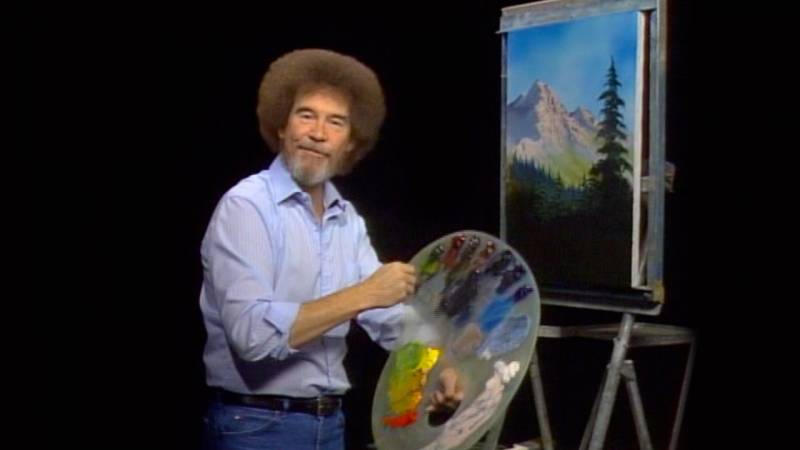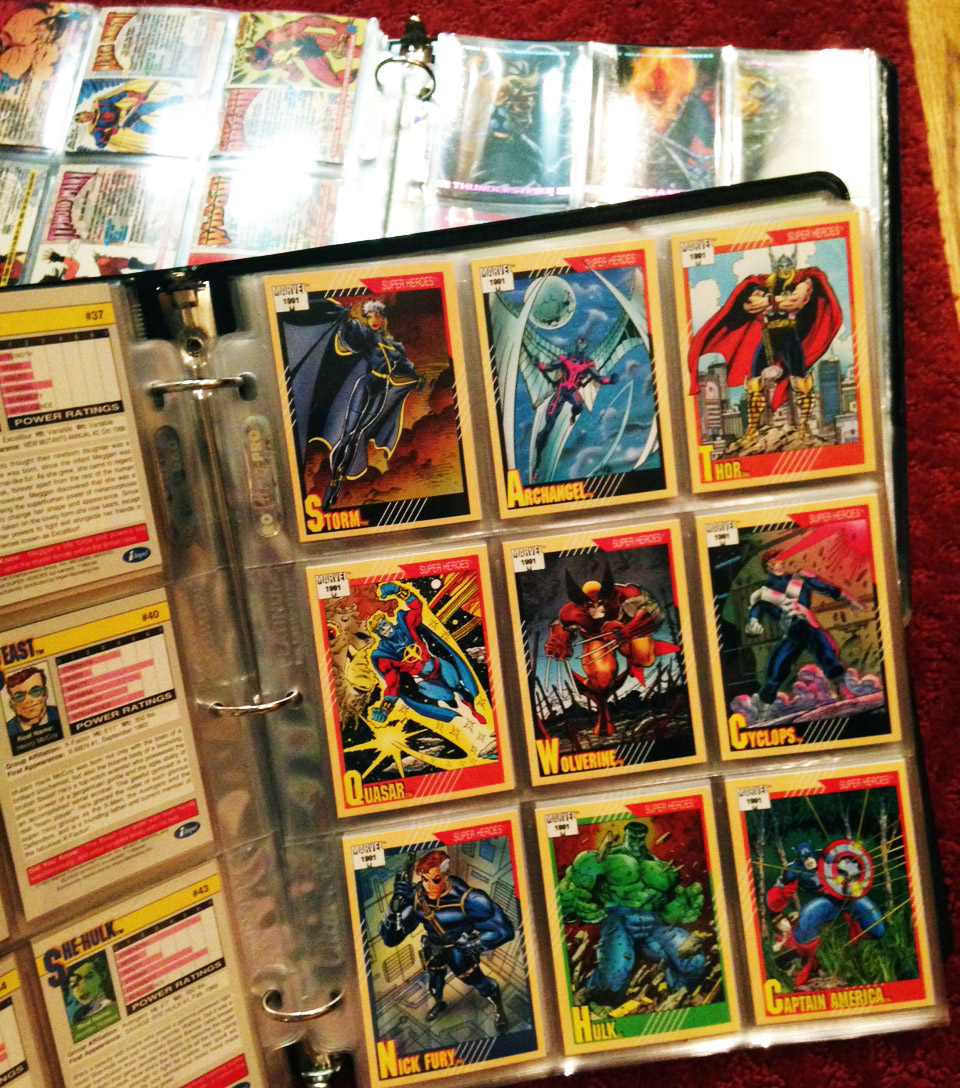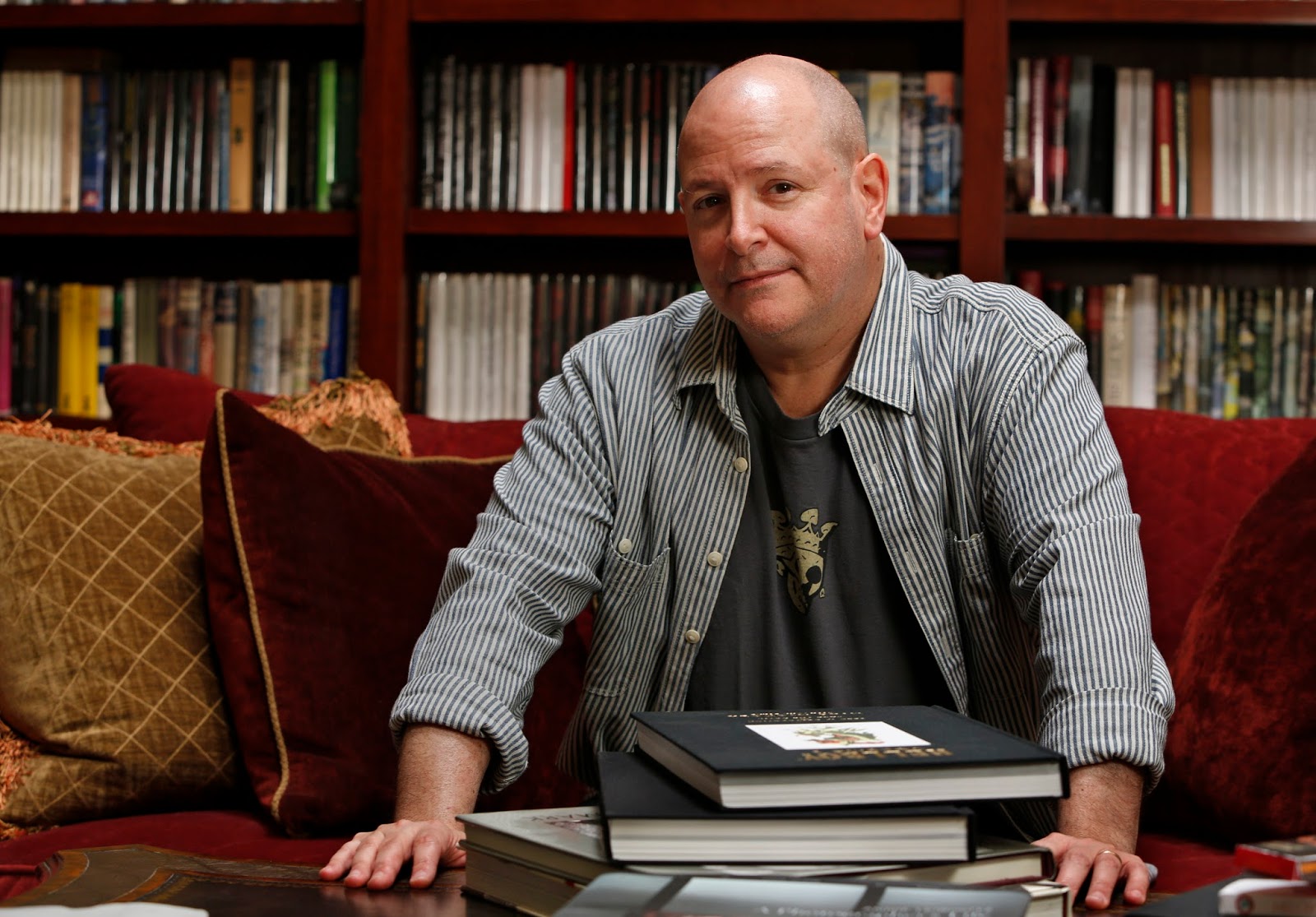
A lot of people will say they love Bob Ross, and though they may enjoy watching him paint, more times than not the compliment is tinged with a sense of irony, or an affection for the kitsch of it all. I don’t share that sentiment one bit. I sincerely think Bob Ross is an incredible artist. In fact, he’s probably a better artist than you or I. I have recently taken to watching an episode of ‘The Joy of Painting’ each night before bed, letting Bob Ross’ voice sooth me to slumber. After watching hundreds of episodes, I have started to develop a true appreciation for what a skilled painter, and businessman, Bob Ross was. I’d like to take a moment to explain why I think Bob was such an impressive artist, and hopefully help build a sense of appreciation for the man as an artist, and maybe inspire some of us to be better artists too.
He was a great teacher
Having been a teacher myself for more than 15 years, I can personally attest to the fact that not all great artists are great teachers. In fact, it’s less much common than you may think. The ability to vocalize and rationalize an inherently irrational craft is really difficult, and requires a special kind of skill set. It hard enough to know what you’re doing, but to also describe why you’re doing it is a skill that is vastly under appreciated by artists until they try it themselves. Furthermore, the ability to actually speak these notions aloud and continuously while working (and not simply labor away in silence) is an admirable skill that requires serious practice.
Check out the Season 1 finale below, where Bob answers all of his viewer’s questions while demonstrating the answers, in a special Q&A episode. I promise you, you’ll learn something new!
He knew his audience
Being a good teacher is more than just being able to convey information. You have to be able to convey it in such a way that is easily digestible to your audience. You have to know how much information your student can handle, and help them take baby steps toward a goal. One of my favorite moments in ‘Joy of Painting’ is when Bob begins to describe why he is softening edges and reducing the contrast of his background. He begins to say that it adds a sense of atmospheric perspective, but stops midsentence.
“It adds a sense of atmos…. It makes it look far away.”
Now, that is a man that knows his audience! He actually took a moment to think about how his audience would receive his words, and then altered his description, literally dumbing it down so that the layman could process the information better!
He disavowed the notion of ‘Talent’
Many people who don’t know how to draw or paint like to simply chalk their ignorance up to “A lack of God-given talent”. Bob knew that talent was a myth, and repeatedly said so on his show. He encourage everyone to give painting a try, and told them that with a little work, and a lot of passion, that they too could create something beautiful.
“I think there is an Artist hidden in the bottom of every single one of us. And here we will try to show you how to bring that artist out… to put it on canvas, because you too can paint almighty pictures. You know, we have avoided painting for so long because all of our lives we’ve been told you have to go to school half your life, maybe even have to be blessed by Michaelangelo at birth to ever be able to paint a picture. And here we want to show you that’s not true… that YOU can paint a picture right along with us.”
He let the paint work for him
During my education, I was often told by teachers to “let the paint do the work”, and although I understood this notion in theory, it was years before I actually began to implement it in practice. Paint, and tools, want to do certain things, and a good artist knows how to let them do that while still keeping them on a short leash. Bob Ross’ application of paint is wonderful example of this. His trees look effortless because they are. His brush naturally wants to make certain shapes, and so he lets it. Wether you’re a traditional artist, or a digital one, there is a lesson to be learned here.

He did multiple studies
We all know that we should do studies, and that our work will be better for it. But honestly, how many us actually DO them? We often skip these early steps, and tell ourselves that we will just figure it out we go. But more times than not, time doing studies is time well spent, and actually saves you time in the end. Bob Ross actually painted each painting you saw on his show THREE TIMES. Once before the show, so that he could experiment and have a good study to work from when painting live… A second time ON the show, which is what we all got to see… and then lastly, he would paint the image a third time AFTER the show so he could take his time and actually execute the painting the way he envisioned. The painting you saw develop on air was actually just a second study for a final painting. Now that is commitment to quality!
He used limited materials
It’s really easy to get caught up in purchasing materials hoping that just the right color, or just the right brush will be the panacea your painting has been needing. I myself often lay out upwards of 18 colors on my palette. Conversely, Bob kept his materials quite simple, and managed to do quite a lot with very little, often times using just 4 or 5 colors and a single brush for an entire painting.
Watch the video below to see Bob demonstrate an entire painting using only black and white for the sake of his color blind audience:
He understood the importance of texture
Texture is one of those things that really separates a novice painter from an experienced one. Not all things should be painted the same way. The way you paint fabric should not be the same way you paint skin. If you want a convincing result, the actual brush handling between surfaces needs to differ, and few people manage this as well as Bob Ross did. To this day, I can not handle a palette knife with anywhere near the finesse that Bob Ross does, and I think few people can.
He was fast
I sometimes spend DAYS considering and reconsidering the smallest of elements in a painting, always fussing endlessly over the dumbest of minutia… “Should this finger bend 40 degrees, or 45 degrees? 40 degrees or 45 degrees? Maybe I’ll split the difference!”
The kind of confidence it takes to execute a finished work in 25 minutes is incredible. I challenge any one here to try keep up with Bob as he paints, and finish a landscape from start to finish in that short amount of time. That’s difficult even digitally, let alone traditionally.
Below is a wonderdful example of just how much Bob could accomplish in this short amount of time. Don’t believe me? Just watch the last 5 minutes of this video and prepare to humbled.
He took a leap of faith
After being an Air Force Sergeant for 20 years, Bob Ross could have easily kept doing what he was doing and had a very comfortable retirement. But after selling some of his hobby works, he slowly began to earn as much from his paintings as he did from his military service. So he decided to take a plunge and pursue art for a living. As I’m sure many of our readers can personally attest to, quitting your day job in order to pursue art is an excruciatingly difficult decision! It takes overcoming a lot of fear, and a willingness to work hard. Quite honestly, many of us simply don’t have the guts to try it.
He respected other artists
Bob Ross was not the first oil painting instructor on Television, nor did he invent his technique. Bill Alexander of ‘The Magic of Oil Painting’, was one of Bob’s biggest influences and he had no problem admitting it. In fact, the very first episode of ‘The Joy of Painting’ is dedicated to Bill Alexander. But in addition to a deep respect for Bill, Bob often invited guest artists onto his show, knowing that his way of painting was by no means the only way to paint. In fact, some of Bob’s guests actively encouraged methods completely contrary to Bob’s. And still he continued to provide alternate points of view out of respect for his peers and his students.
He built an empire
As I mentioned earlier, Bob Ross was not the first artist to have his own TV Show. Jon Gnagy, Bob Cottle, and Bill Alexander all preceded him. But none of them turned their shows into a multi-million dollar business that has persevered for generations. Bob Ross has built a true legacy that any professional artist would be envious of. That is no easy feat in any field, let alone one as difficult as art.
He did it all in just 11 years
Bob Ross, got a very late start at pursuing art. He was 38 years old when he began his show ‘The Joy of Painting’ and sadly, died prematurely at the age of just 52. And still, Bob has personally estimated to have completed more than 30,000 paintings in his lifetime.
‘The Joy of Painting’ was filmed from 1983, through 1994.
That is just 11 years!
Many of us here on Muddy Colors have been professional illustrators for decades now, myself included, and have not had nearly the impact Bob has had. In 11 short years, Bob Ross went from a drill Sergeant with a passion for painting landscapes to one of the best known artists of the century.







With only one exception, the rule of thumb hammered into art students, whichever college I was at or involved with was….Bob Ross was to be avoided at all costs and teachers generally followed their visceral hatred by several slanders and threats. Art snob elitism at its finest!
I always told my students that you could generally always learn from anyone while you were trying to find your ‘own artistic voice.’ The family and I often would sit and binge watch Bob, amazed at how quickly he was able to produce the artwork and make a finished image seemingly magically appear in less than 30 minutes. Great article and insight into a master craftsman!
I’m weary of any “teacher” that tells a student that something isn’t worth learning from.
I paint nothing like Bob…or James Gurney…Or Dan dos Santos…or a million other people….but there is always a trick or tip I can pick up watching people that have a plan, a process, or a desire to teach. And I can admire what they do even if not my cup of tea or if I couldn’t catch on to their style in a million years. I typically try to struggle through problems on my own because for me it makes a better learning experience…but there are times I wouldn’t even know where to start or wouldn’t even think to try without seeing someone else show what is possible.
I always thought people willing to be ‘students of life’ often made the best artists, and with that viewpoint teachers come in many places. I often had ‘philosophical discussions’ with students because they didn’t see value in having to ‘do this’ or ‘take this class that has nothing to do with art’. I tried to impart ‘the bigger the bag you have to pull from the richer you art can be’.
Thank you so much for posting about Bob Ross! I’ve always been amazed at how quickly he could complete a painting, and now I know that the studies he did no doubt helped on that front. I also have greatly admired him as a quiet, kind and unassuming but assured person. It’s hard to reconcile that with him being an air force sergeant! It’s wonderful that his shows live on to teach everyone interested in how they too can learn to paint. Of course, not everyone is enamored with his artistic style (me included), but that doesn’t (and shouldn’t) preclude him from being admired for his teaching ability, his art skills, his artistic success, his kindness and his generosity. I wish more of the art teachers I’ve had were half as capable.
Ditto! He was obviously limited in his capabilities, but as teacher I really admire his ability to encourage the amount of people that he has. Even the average person walking the street has some small sentiment of art appreciation, even if they’ve never stepped foot in a museum, likely due to Bob Ross.
GREAT article, Dan. I’ve been watching Bob quite a bit lately, coincidentally. The man deserves respect, and you highlighted some great points.
God damn right
While I agree with a lot of your points, I think the greatest realization I got from this article was that I probably never watched Bob Ross in the original English. It is a credit to the dubbing team that I ever forgot this 😛
Oh, wow! I never even realized he was broadcast internationally and dubbed! I’d be curious to hear the translations.
Oh yes, I saw him for the first time in Cuban television, more than 20 years ago and then later on in Colombia during the years I lived there before moving to Canada. The man was everywhere! Great article!
I used to watch Bob Ross videos at night with my little children to put them to sleep. They enjoyed watching him paint, but his voice knocked them out! Although I never wanted to paint in Bob’s style, among many helpful ideas I learned from him was this: It’s my world and I can paint it the way I want it to be. Many times through the years, I have found myself fretting over a small detail, or wanting to change something from the way it is in real life or my photo reference and I will suddenly hear his voice in my thoughts reminding me that I don’t have to be a slave to either one.
You missed one: Bob Ross had an amazing eye for color. I started watching Joy of Painting in desperation during art school when my professors were all wrapped up in the conceptual underpinnings of everything and I really just needed, more than anything, to watch someone put paint on canvas in a way that yielded results.
The thing I noticed immediately was that almost every color he used was a mix. Usually, his brush had at least two, maybe three pigments on it, and he was getting amazing results. And it had nothing to do with the standard color wheel either. After I figured that out, I started mixing everything all the time, with reckless abandon. It was less about getting the “right” color and more about getting really nice color consistently. My paintings became much richer and much less muddy as a result.
Dan- thank you VERY much for this article. I started watching “The Joy Of Painting” most likely after Ross passed away, but it was a ritual for many years with my dad and I watching Bob paint almighty mountains and “big ol’ tress” that ALWAYS needed a friend. I learned so much as a young artist from Bob Ross- not just the techniques, but also the storytelling and way he explained things. I’m an elementary school art teacher/illustrator and how I tell students complex ideas always comes back to Bob Ross- keep it simple; know your audience.
I recently introduced my students to “The Joy Of Painting” via YouTube and it was so mesmerizing. Between Bob’s amazing voice and his paintings…….my students (1st-5th grade) absolutely went wild over Bob Ross. They COULD NOT believe how realistic his work was, and how fast he did it in. I’m going through the whole series on YouTube at the moment, and as a teacher and an artist- I have much to learn.
Thank you for recognizing one of my art heroes.
I’m so happy to hear you’re sharing it with your younger students! I recently made my elderly parents watch an episode with me, and even they (who grew up watching me work) were totally blown away by the episode. It really does look like magic to people who have never painted.
Thank you Dan! Bob is a favorite to watch and listen to. He makes me want to try and the techniques he uses are doable for total amateurs like me. I’m slowly working through my to-do and try-to list and he’s getting closer to the top.
I love your Mercy covers!
The calming effect of his voice is now actually used in a sleeping aid app! Sadly the art was scrapped and only the audio is being used.
https://news.artnet.com/art-world/bob-ross-sleeping-aid-1297421
Boi I don’t gotta read this to know I’m worse than bob ross
Amazing to watch. Good read, thanks for sharing.
Thank you very much Dan Dos Santos.
This is a super article.
Never heard about this artist Bob Ross, having studied in an art school in the UK where they covered different artists.
I love the videos you included. He is an amazing artist with such a calming soothing friendly encouraging and non pressurising voice and I shall definitely be following some of his painting videos.
It’s nice to have an art teacher that’s not scary!
Many thanks again Dan Dos Santos, Maya
This is such a great post, Donato. Speaking of Bob taking leaps of faith: how about slapping in a big ass tree right over that lovely soft sky he’d just painted. Wet on wet, no chance for redo / undo.
I remember when Bob was the ONLY person doing painting demos that were publicly available (via PBS). Now painting and drawing demos are everywhere, but back in the day Bob was a LIFELINE to would-be artists / illustrators like me.
I love everything about this post. I teach teens and Bob Ross is BELOVED by them (if in a campy way). Every year I challenge my students to do a painting following along with Bob Ross. It is always a shocker which teens make awesome paintings just doing what Bob does.
AND I had NO IDEA he did all of this in 11 years and died so young. Thank you for this post, Laura
Nice! SO much harder than it looks!
There’s an interesting article on Bob Ross, covering his initial meeting and association with Bill Alexander, to the creation of his own company, Bob Ross, Inc., to the fight over control of Bob Ross as an intellectual property after his death, at The Daily Beast. Url is https://www.thedailybeast.com/sex-deceit-and-scandal-the-ugly-war-over-bob-ross-ghost?ref=thefuturist
Thanks for sharing! I’ll check it out.
These are all good positive aspects about Bob’s art. Any artist can learn something from his presentations. I recently watched the Netflix biography, which revealed some of the darker side of his rise to fame. Apparently his business partners were part of the reason for his success, but they were obsessed with making him a brand, starting Ross art schools, and ultimately taking advantage of him. Bob’s impressive speedy technique was a great learning experience, especially for novice painters. But one downside of his show, as well as the many Ross branded schools that sprouted up, was that students only learned the Ross formula style. Which resulted in art that looks just like a Ross.
Sadly, Bob Ross died relatively young from cancer. It was speculated in the documentary that Bob’s extensive use of paint thinner that was part of his technique and presentations may have contributed to his getting cancer. Be cautious with the toxic materials folks!
Yeah, I’m weirdly reluctant to watch that documentary. I think I’m afraid to taint things. Perhaps that’s willful ignorance, but I’m sort of OK with that when it comes to someone’s personal life.
Great article on Bob.
Living outside the US I had no idea who Bob was, but I now regularly look at him.
The thing I remember most about Bob’s video’s is that if you watch a couple of them you realize that he has a real plan with them. And if you listen to him, there’s more instruction in what he’s saying than what he’s actually saying.
Great article Dan, and so glad to see the MC crew isn’t part of the gang that holds up their nose to Bob Ross, not that I expected that though. It’s just a nice confirmation.
Great article. It was nice to hear a great artist (yourself) give due recognition to an under appreciated artist such as Bob Ross. Having taught art for 39 years, I know how tough it is to craft your language so it both describes the visual concept and hits the audience right where they are at. It is nearly as difficult as painting or drawing itself. One of my greatest joys as an art educator was seeing in my students’ work what I had just been saying to them. Talking while painting is another skill that’s hard earned. Bob really was a multi-skilled artist that most current artists speak poorly of, if at all. If popularity and success as an artist is determined by the number of pieces you sell and the money you make from your art, then Bob Ross stands heads above many current “master” artists.
Thanks for the piece and the overdue credit you’ve given to Bob.
Did you watch that Netflix doc? . It was a super interesting and sadly familiar tale that hit on the weirdly symbiotic relationship of business folks profiting on the backs of creatives. While on some levels he did kind of get fucked, you could also argue he’d have never reached nearly as many people and therefore never had the impact he had if he hadn’t gone into business with the Kowalski’s. Regardless, it was nice just hearing about his life and personal anecdotes from his friends and family. Love me some fuckin bob ross. Growing up where I did in a family with no artists, he was singularly my intro into painting. I randomly ended up in Muncie Indiana a few months after his death in 1995, and happened upon the building where they used to film the joy of painting and it felt like a religious pilgrimage.
I hear that. My only exposure to “high” art as a kid was Bob Ross and the comic section of a corner store.
What I loved about that Documentary on Netflix is that it never actually ruined the man himself. Nothing was revealed that made you cringe at who Bob Ross was, quite the opposite. It was the business side and the couple who Bob went into business with that seem to have ended up being the issue.
What I came away with from that documentary was, Love, Appreciate and Respect Bob Ross, but you may not want to support Bob Ross Inc., because of how it was shown to be run by the two people left running things. Bob was for art, they were for money.
Though there can be two sides to the same coin, but seeing as they tend to sue everyone and not want to be involved in the documentary and tell their side, it seems they probably got it right for the most part. Which is a real shame.